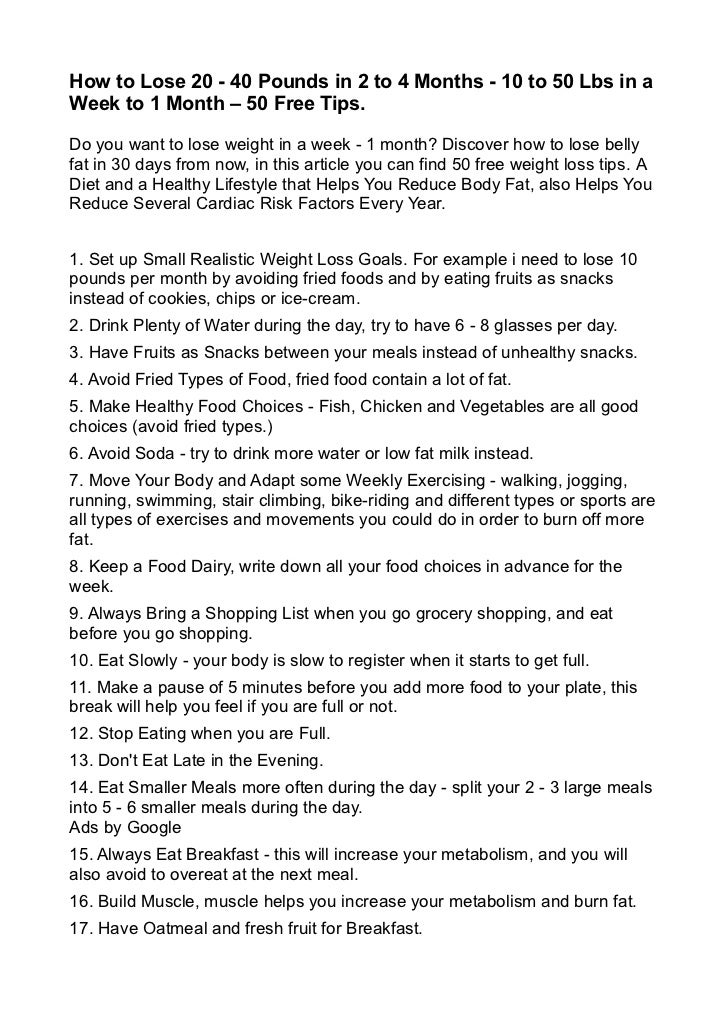How To Lose 20 Pounds In Month

Imagine stepping into a sun-drenched kitchen, the aroma of freshly squeezed grapefruit filling the air. You reach for a vibrant green smoothie, a concoction of spinach, banana, and almond milk, knowing you're nourishing your body from the inside out. This isn't just about shedding pounds; it's about embracing a healthier, happier you, one delicious and mindful choice at a time.
Losing 20 pounds in a month is an ambitious goal, and while it's achievable for some, it requires a dedicated and structured approach involving a combination of dietary changes, consistent exercise, and a strong commitment to overall well-being. It is crucial to approach any rapid weight loss plan with caution and under the guidance of a healthcare professional to ensure safety and sustainability.
Understanding the Foundations
Before diving into specific strategies, it's important to understand the science behind weight loss. Weight loss fundamentally revolves around creating a calorie deficit – consuming fewer calories than you burn. This deficit forces your body to tap into its stored energy reserves, primarily fat, leading to a reduction in weight.
A pound of fat contains approximately 3,500 calories. Therefore, to lose 20 pounds, you need to create a deficit of 70,000 calories over the course of a month. This translates to a daily deficit of roughly 2,333 calories.
It’s important to remember that individual metabolisms vary, and factors such as age, sex, activity level, and genetics play a significant role in how quickly or slowly someone loses weight. Consult with a registered dietitian or doctor to determine a safe and effective calorie target for your individual needs.
Dietary Strategies for Success
Prioritizing Protein: Increasing your protein intake is crucial for preserving muscle mass during weight loss. Protein also promotes satiety, helping you feel fuller for longer and reducing cravings.
Include lean sources of protein such as chicken breast, fish, beans, lentils, tofu, and Greek yogurt in your meals and snacks. Aim for at least 0.8 grams of protein per kilogram of body weight.
Embracing Whole Foods: Focus on consuming whole, unprocessed foods that are naturally nutrient-dense and lower in calories. Fill your plate with colorful vegetables, fruits, and whole grains.
Limit your intake of processed foods, sugary drinks, and refined carbohydrates, which are often high in calories and low in essential nutrients. Cooking at home allows you to control the ingredients and portion sizes, making it easier to stick to your calorie goals.
Controlling Portion Sizes: Even healthy foods can contribute to weight gain if consumed in excess. Be mindful of your portion sizes and use smaller plates and bowls to help control your intake.
Read food labels carefully to understand the calorie content of different foods and track your intake using a food diary or app. Practicing mindful eating – paying attention to your hunger and fullness cues – can also help you avoid overeating.
The Power of Exercise
Cardiovascular Exercise: Incorporating cardiovascular exercise into your routine is essential for burning calories and improving overall fitness. Activities like running, swimming, cycling, and brisk walking are all excellent choices.
Aim for at least 150 minutes of moderate-intensity or 75 minutes of vigorous-intensity cardiovascular exercise per week. You can break this up into shorter sessions throughout the day, such as 30 minutes of exercise five days a week.
Strength Training: Strength training is crucial for building and maintaining muscle mass, which helps boost your metabolism and burn more calories even at rest. Include strength training exercises that target all major muscle groups, such as squats, lunges, push-ups, and rows.
Aim for at least two strength training sessions per week, with rest days in between to allow your muscles to recover. Consider working with a certified personal trainer to learn proper form and technique to prevent injuries.
High-Intensity Interval Training (HIIT): HIIT involves short bursts of intense exercise followed by brief recovery periods. This type of training is highly effective for burning calories and improving cardiovascular fitness in a short amount of time.
HIIT workouts can be easily adapted to different fitness levels and can be performed using a variety of exercises, such as sprints, jumping jacks, and burpees.
The Importance of Hydration and Sleep
Staying Hydrated: Drinking plenty of water is crucial for overall health and can also aid in weight loss. Water helps to suppress appetite, boost metabolism, and flush out toxins.
Aim to drink at least eight glasses of water per day, and even more if you're exercising or living in a hot climate. You can also incorporate hydrating foods into your diet, such as fruits and vegetables with high water content.
Prioritizing Sleep: Getting enough sleep is often overlooked, but it plays a vital role in weight management. Lack of sleep can disrupt hormones that regulate appetite, leading to increased cravings and overeating.
Aim for 7-9 hours of quality sleep per night. Establish a regular sleep schedule and create a relaxing bedtime routine to improve your sleep quality.
The Mental Game
Setting Realistic Goals: Losing 20 pounds in a month is a significant undertaking, and it's important to set realistic expectations. Be patient with yourself and celebrate small victories along the way.
If you find yourself struggling to reach your goals, don't get discouraged. Adjust your plan as needed and focus on making sustainable lifestyle changes that you can maintain long-term.
Managing Stress: Stress can sabotage your weight loss efforts by triggering emotional eating and disrupting your sleep patterns. Find healthy ways to manage stress, such as practicing yoga, meditation, or spending time in nature.
Seeking Support: Surround yourself with a supportive network of friends, family, or a weight loss group. Sharing your experiences and receiving encouragement from others can help you stay motivated and on track.
Consider working with a therapist or counselor if you're struggling with emotional eating or other mental health issues that are impacting your weight loss journey.
The Long-Term Perspective
Remember that sustainable weight loss is a marathon, not a sprint. While losing 20 pounds in a month may be achievable for some, it's important to prioritize long-term health and well-being over rapid results.
Focus on making gradual, sustainable lifestyle changes that you can maintain for years to come. This might involve adopting a healthier diet, incorporating regular exercise into your routine, and managing your stress levels.
Consulting with a registered dietitian or healthcare professional can provide personalized guidance and support to help you achieve your weight loss goals safely and effectively. The Academy of Nutrition and Dietetics offers resources and referrals to registered dietitians in your area.
Ultimately, the key to successful weight loss is consistency and commitment. By making informed choices, staying focused on your goals, and prioritizing your overall well-being, you can achieve a healthier and happier you.
While rapid weight loss can be tempting, it’s important to acknowledge the potential risks. According to the Mayo Clinic, rapid weight loss may increase the risk of gallstones, dehydration, electrolyte imbalances, and nutrient deficiencies.
It’s crucial to listen to your body and consult with a healthcare professional before embarking on any drastic weight loss plan. Remember, the goal is not just to lose weight, but to improve your overall health and well-being.
As the sun sets, casting a warm glow over the kitchen, you reflect on the day's choices: a nutritious breakfast, a brisk walk in the park, and a mindful dinner. The journey is ongoing, but each small step brings you closer to a healthier, more vibrant version of yourself. The feeling of empowerment is tangible, a reminder that you are in control of your well-being.


















